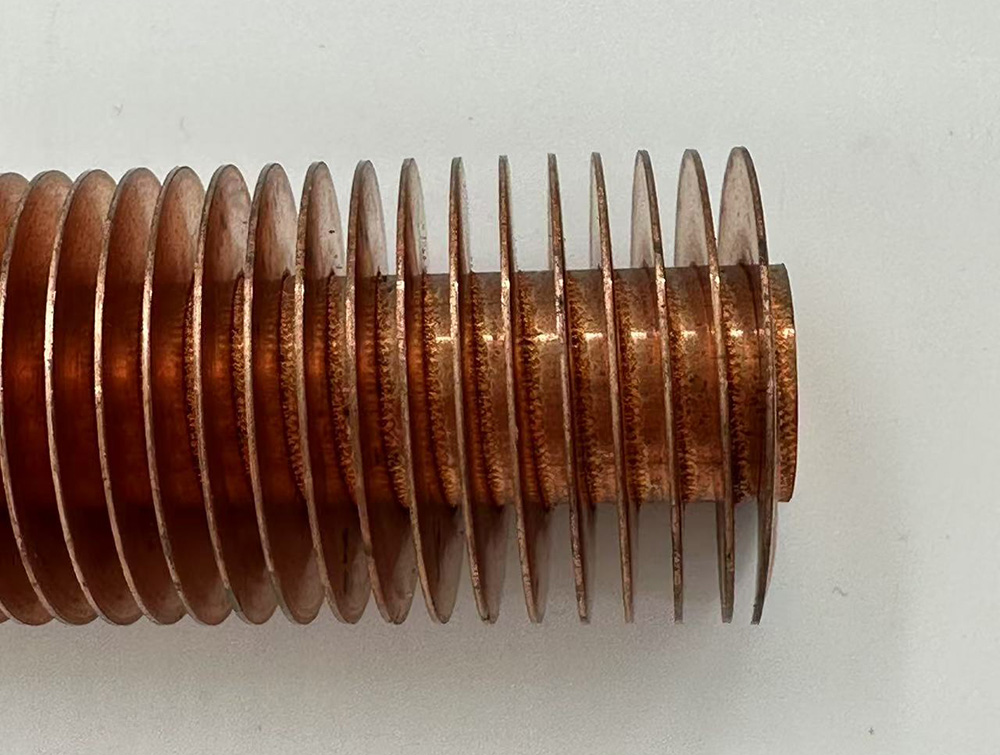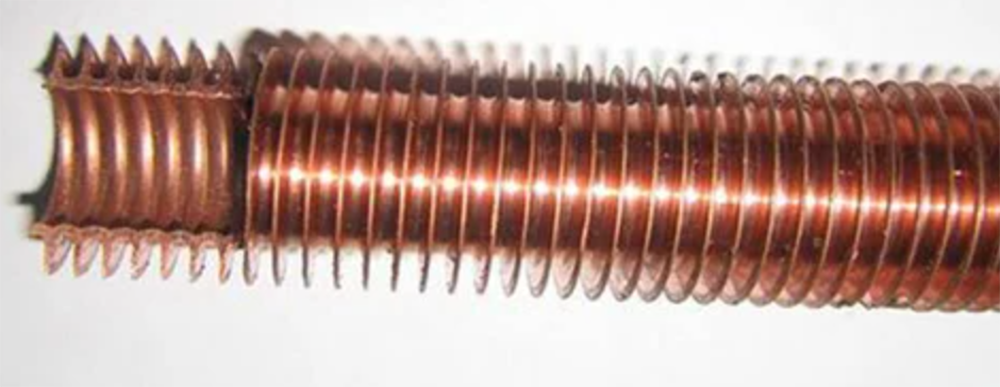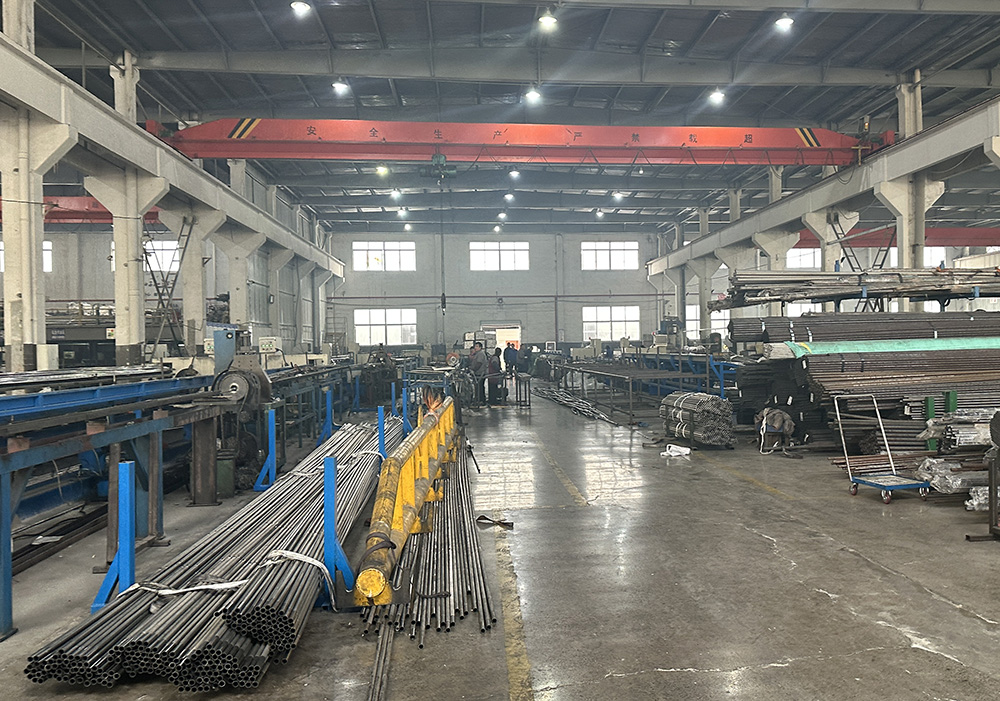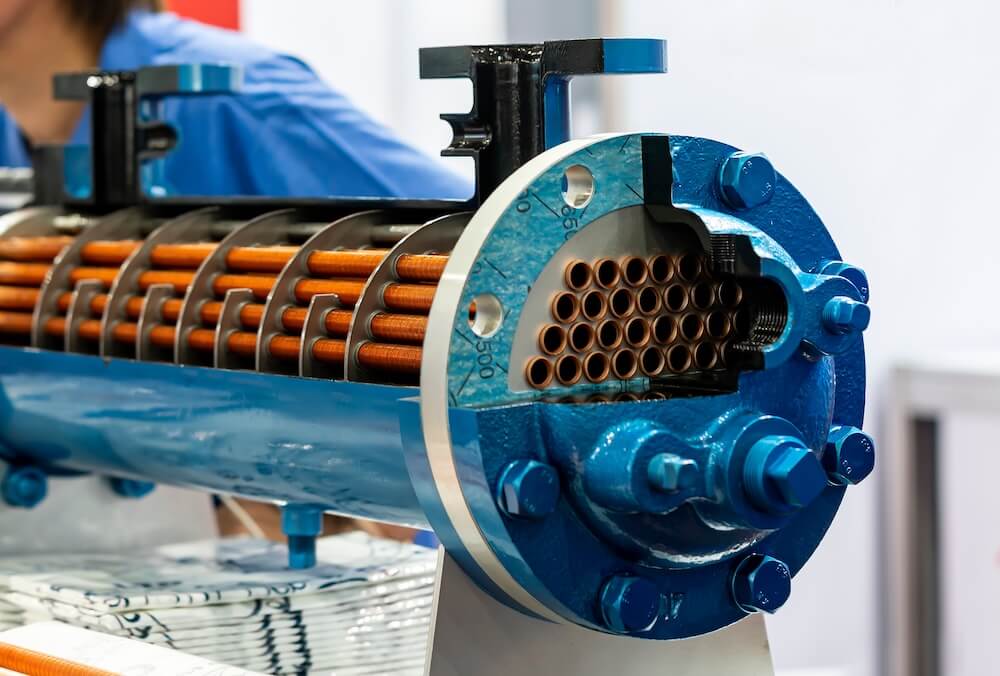Spiral Finned Tube
A heat exchanger component consisting of a tube with spiral fin
China Spiral Finned Tube Supplier
Cufin Tube specializes in spiral finned tube designed for efficient heat transfer in various applications. Spiral finned tubes are specialized heat exchangers designed to enhance thermal efficiency through their unique structural design. With advanced manufacturing techniques and over 40 years of experience, we provide customized solutions that meet international standards. Trust us to deliver quality and reliability for your HVAC, petrochemical, and industrial projects.

Technical Specification:
- Fin Height: 10 mm to 30 mm.
- Fin Thickness: 0.8 mm to 4 mm.
- Fin Pitch (Spacing): 5 mm to 30 mm.
- Tube Length: Standard lengths up to 12,000 mm (or as specified).
Performance Characteristics:
Heat Transfer Efficiency: Spiral fins increase the effective heat transfer area significantly, enhancing thermal performance compared to smooth tubes.
Operating Temperature: Typically up to 350°C, depending on material selection.
What Is Spiral Finned Tube?
A spiral finned tube is an efficient heat transfer element with fins spirally wound around it, increasing the surface area for heat transfe. This design enhances heat transfer, reduces flow resistance, and decreases metal consumption, improving the economy and operational reliability of heat exchange equipment. The tube itself is typically made from metal such as copper, aluminum, carbon steel, or stainless steel. The fins can be made from the same material or a different one with higher thermal conductivity, like copper or aluminum. They are often tension wound onto individual tubes.


Performance Characteristics Of Spiral Finned Tube
Enhanced Heat Transfer: This is the primary goal. The spiral fins significantly increase the surface area in contact with the surrounding fluid (air, liquid, etc.). This assumes that a fluid flows through the center of the tube.
Turbulent Flow: The fins likely induce some turbulence in the fluid flowing around the tube (on the outside of the tube). This turbulent flow disrupts the boundary layer (a thin layer of stagnant fluid that insulates the surface), further enhancing heat transfer.
Compactness: Although not explicitly visible, the image implies a compact heat transfer solution. The fins allow for a lot of heat transfer surface area in a relatively small volume.
Material: Without knowing the specific material, we can assume that the tube is made from a material with good thermal conductivity
Advantages Of Cufin Tube's Spiral Finned Tube
Spiral finned tube offer several advantages that make them highly effective in various industrial and commercial applications. Here are the key benefits:
Other Applications Including :
- Corrosion Resistance
- Mechanical Strength and Durability
- Wide Temperature Range
- Enhanced Heat Transfer Efficiency
- Low Maintenance Requirements
- Hygienic Properties
- Compact Design
- Environmental Benefits
In summary, the combination of corrosion resistance, mechanical strength, enhanced heat transfer efficiency, and low maintenance requirements makes spiral finned tube a preferred choice in many demanding applications across various industries.

Applications Of Spiral Finned Tube
Heat Exchangers: This is a very broad category. Spiral finned tubes are used in numerous types of heat exchangers, where they facilitate the transfer of heat between two fluids.
Air-Cooled Heat Exchangers: Used in applications where air is used to cool a process fluid. Think of large industrial coolers.
Shell and Tube Heat Exchangers: Finned tubes can be used inside the shell to enhance heat transfer.
HVAC Systems: Heating, Ventilation, and Air Conditioning
Air Pre-heaters: Used in heating systems to recover waste heat from exhaust gases to preheat incoming air, improving efficiency.
Condensers and Evaporators: In refrigeration and air conditioning systems, finned tubes are used in condensers (to release heat) and evaporators (to absorb heat).
Economizers: Used in boilers to preheat the feedwater using the heat from flue gases, improving boiler efficiency.
Waste Heat Recovery Systems: In industrial processes, spiral finned tubes can be used to capture and reuse waste heat, increasing energy efficiency and reducing emissions.
Industrial Processes: Many industries require precise temperature control. Spiral finned tubes are used in various processes within the chemical, petrochemical, food processing, and power generation sectors.
Book A Video Call
Your reliable China partner of finned tubes for heat exchangers
Mass Production Photos
Check how we will produce your finned tube bulk orders in our future cooperation. We take every step seriously, from raw material to packaging, to ensure that the fin tubs delivered to your warehouse are 100% qualified.
Frequently Asked Questions
About Spiral Finned Tube For Heat Exchangers
Can the dimensions (diameter, length, fin height, fin spacing) of the spiral finned tube be customized for my specific application?
Yes, most manufacturers offer custom design options to optimize the tube for your specific needs. Factors like fluid flow rates, temperature differences, and space constraints will influence the optimal dimensions.
What are the primary applications of spiral finned tubes in heat exchangers?
How does the fin density (fins per inch) affect heat exchanger performance?
Higher fin density increases the surface area for heat transfer, improving performance up to a point. Beyond an optimal density, the increased airflow resistance (or fluid flow resistance) can reduce the overall heat transfer coefficient.
What materials are typically used to manufacture spiral finned tubes?
Aluminum: Lightweight and good thermal conductivity; often used for air-cooled heat exchangers.
Copper: Excellent thermal conductivity and corrosion resistance; suitable for demanding applications.
Carbon Steel: Strong and cost-effective; used in many industrial applications.
Stainless Steel: Good corrosion resistance, high-temperature strength; used in harsh environments.
What maintenance is required for spiral finned tube heat exchangers?
Cleaning: Removing deposits and fouling from the fin surfaces.
Inspection: Checking for corrosion, erosion, and mechanical damage.
Leak Testing: Periodically testing for leaks in the tubes.
What is the pressure drop associated with using spiral finned tubes in a heat exchanger, and how does this affect the pumping power requirements?
Spiral fins will increase the pressure drop compared to smooth tubes. The fin density and geometry significantly influence the pressure drop. A higher pressure drop means higher pumping power requirements. It’s essential to carefully select the fin design to balance heat transfer performance with acceptable pressure drop.
Can you supply samples of aluminum fin tubes for evaluation?
Yes, we can provide samples upon request to help you assess the quality and suitability of our products for your specific applications.
What are your lead times for orders of aluminum fin tubes?
Our standard lead time is typically 4-5 weeks, but we can expedite production for urgent orders, depending on capacity and requirements.
Request A Free Quote
We'd like to work with you
Send us a message if you have any question or request a quote. Our expert will response within 24 hours and help you custom your finned tubes heat exchanger solution!


